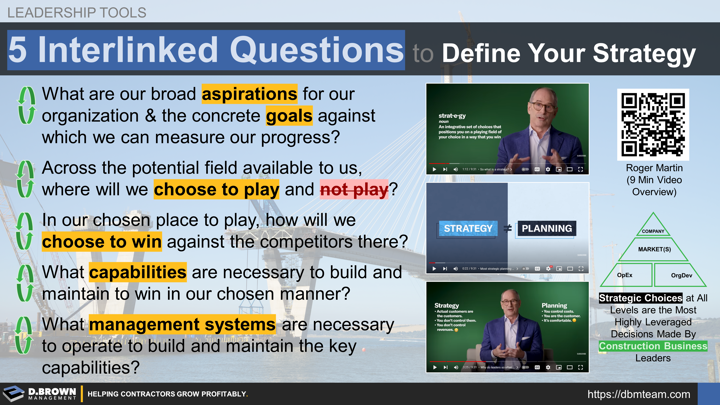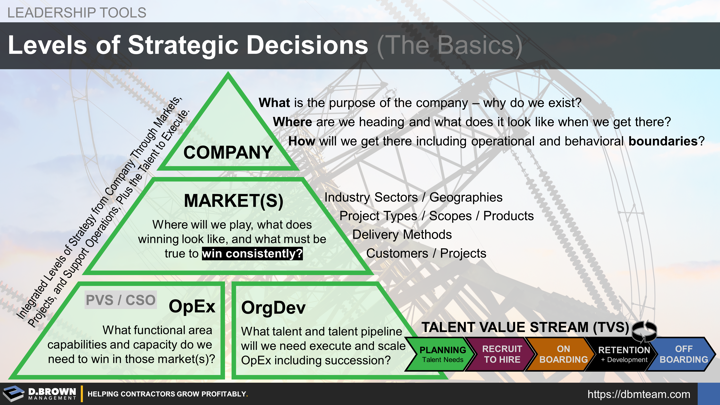Those choices start with five interlinked questions.
Roger Martin is one of today's best thinkers when it comes to strategy, building upon lessons learned throughout history from Sun Tzu in The Art of War through A.G. Lafley's experience leading Proctor & Gamble. He defines five interlinked questions to help leaders determine their strategies:
- What are our broad aspirations for our organization and the concrete goals against which we can measure our progress?
- Across the potential field available to us, where will we choose to play and not play?
- In our chosen place to play, how will we choose to win against the competitors there?
- What capabilities are necessary to build and maintain to win in our chosen manner?
- What management systems are necessary to operate to build and maintain the key capabilities?
These questions are deceptively simple on the surface but definitely not easy to answer.
- They are interlinked with each other, requiring fully integrated answers for optimum results.
- There are many "Strategic Possibilities" developed from "Strategic Brainstorming" that must be explored to make choices that will best position a contracting business to win over the long term.
- These five questions must work within a business model and be integrated with operational execution.
- These five questions must be based on solid strategic foundations - the things that won't likely change.
- These five questions must be asked and answered at all levels of the organization and integrated with each other for optimum results.
Strategic choices become progressively more complex as a contractor grows and competes across different market sectors and in different geographies.
Resources to Learn More:
The Big Lie of Strategic Planning (6-Page Article)
- What comfort trap do you fall into the most?
- How about others on your team?
Five Questions to Build a Strategy (3-Page Article / 4-Minute Video)
- Which of the five questions are you struggling with the most and why?
- To what degree do your opportunities and bids or proposals align with your strategic choices?
Playing to Win (Audible Book)
D. Brown Management has worked with hundreds of contractors across the United States and brings that experience to the table when helping teams work through these choices. Please contact us to learn more about our approach to strategy from brainstorming to decision making to aligning the team around execution.


